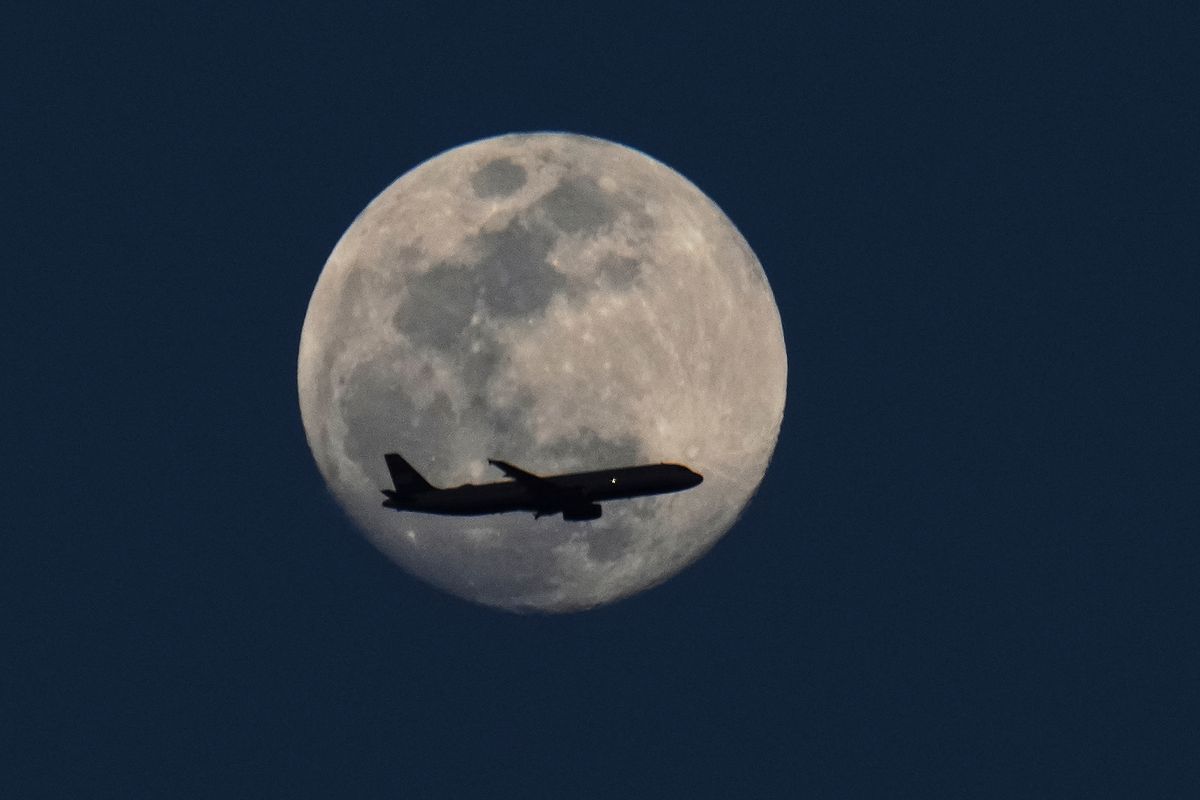So you’re booking your flight, and just when you’re about to check out, the airline asks if you’d like to pay a little something to offset your share of the flight’s pollution. Or, maybe you’re an environmentally minded person, and you’ve heard you can buy these things called carbon offsets.
Are they worth it? Let’s explore.
Why planes are so pollutive
A roundtrip flight from New York to Los Angeles emits more than 1,300 pounds (about 614 kilograms) of planet-warming carbon dioxide per passenger, according to an emissions calculator from the International Civil Aviation Organization. That’s about the amount of pollution you’d save if you swore off meat for 17 months.
Jet engines burn fossil fuels, releasing planet-warming gases into the atmosphere. They also release water vapor, which turns into long, thin clouds called contrails that trap heat instead of letting it escape to space — additional warming that isn’t typically included in a flight’s emissions, said Diane Vitry, aviation director at a clean energy advocacy organization called the European Federation for Transport and Environment.
Reducing emissions from air travel is difficult. Batteries weigh too much and provide too little power for long flights. Sustainable aviation fuel — biofuels made from things like corn, oil seeds and algae that can be mixed with jet fuel — is currently more expensive than traditional fuel and lacking sufficient supply to be in wide use.
“Aviation is the problem child,” Vitry said. “Aviation and shipping are not decarbonizing, and definitely not fast enough.”
That’s where carbon offsets come in.
What is a carbon offset?
A carbon offset is a certificate or a permit to emit planet-warming gases. It’s connected to something that stores or reduces carbon emissions — for example, planting trees, or funding renewable energy.
The idea is that the program or action offsets your pollutive action. You drive a car that pollutes a certain amount, you buy a carbon offset that leads to the planting of a tree that sequesters the same amount, and bam: the pollutive action (driving) is offset (tree planting).
They’ve gotten popular enough that there’s an entire marketplace that connects people and companies wanting to reduce their impacts with other companies that promise to do so.
Do the offsets work?
Vitry doesn’t think so. She calls them a fake climate solution.
“Unfortunately, it is not what is going to solve aviation’s climate problem,” she said. “You can’t clear your climate conscience with an offset.”
Sure, you can plant a tree, but Vitry said that doesn’t stop your flight’s emissions from entering the atmosphere. The tree may eventually absorb an equivalent amount of emissions. Or it may die. Or it may be sold as an offset multiple times by an unscrupulous company, meaning the tree can’t possible absorb all the emissions it’s supposed to.
Barbara Haya, director of the Berkeley Carbon Trading Project, has studied carbon offsets for more than 20 years. She said some offset schemes are overcounted by 10 to 13 times their actual value.
“There’s so much over-crediting on the offset market, so many credits that either don’t represent any emissions reductions at all or represent just a small fraction of what they claim,” Haya said.
She said that’s partly because the voluntary offset market is largely unregulated, and it’s really difficult to measure offsets. The other problem is everyone involved benefits from over-exaggerating the benefits of offsets. “The buyer of the credit wants the cheap credits, the seller of the credits wants to get more credits for the same activity and the third party verifier is hired by the project developer, so has a conflict of interest to be lenient,” Haya said.
Jodi Manning, chief executive of the carbon offset nonprofit Cool Effect, said consumers should beware of offset programs that don’t say clearly which project will benefit from your purchase or how much of your money is going to a project. But she said “high-quality” carbon credits can play an important role where emissions are unavoidable.
Manning said offsets have to be permanent, transparent, and unable to exist without the offset funding.
“When carbon is done correctly, it can provide a credible, immediate way to account for the emissions that travelers cannot otherwise reduce. We all create emissions at some point and it is certainly better to take action to compensate for it than to do nothing,” she said.
Several airlines that offer offsets did not respond to requests from AP to talk about their use. One that did, Southwest Airlines, said in a statement that it does not plan to rely on carbon offsets to help it reach a goal of net zero emissions by 2050.
What are you some other options for offsetting your air travel?
Fly less, take the train if you can, and pack light, Manning said.
If you have to fly, think about cutting your emissions in other ways, Haya said.
Instead of buying carbon offsets, Haya said she donates $1,000 to an organization she cares about on the rare occasion she flies for work or family visits.
“We have an ethical obligation not to fly unless we really have to,” she said.
___
The Associated Press’ climate and environmental coverage receives financial support from multiple private foundations. AP is solely responsible for all content. Find AP’s standards for working with philanthropies, a list of supporters and funded coverage areas at AP.org.
By CALEIGH WELLS
Associated Press


